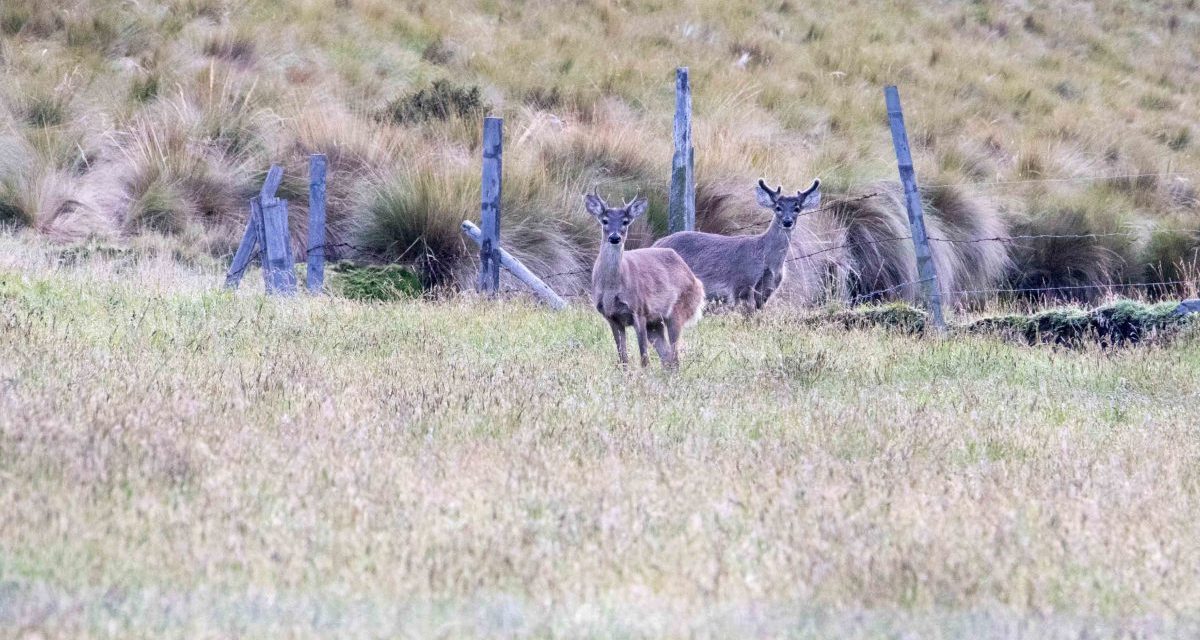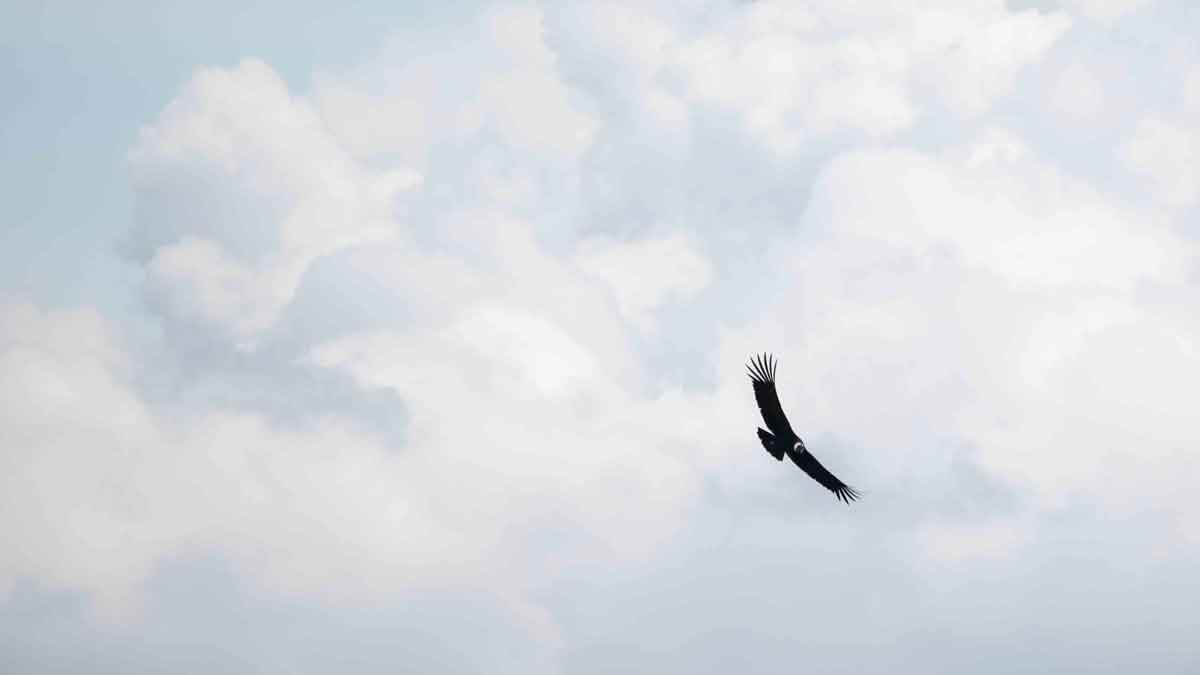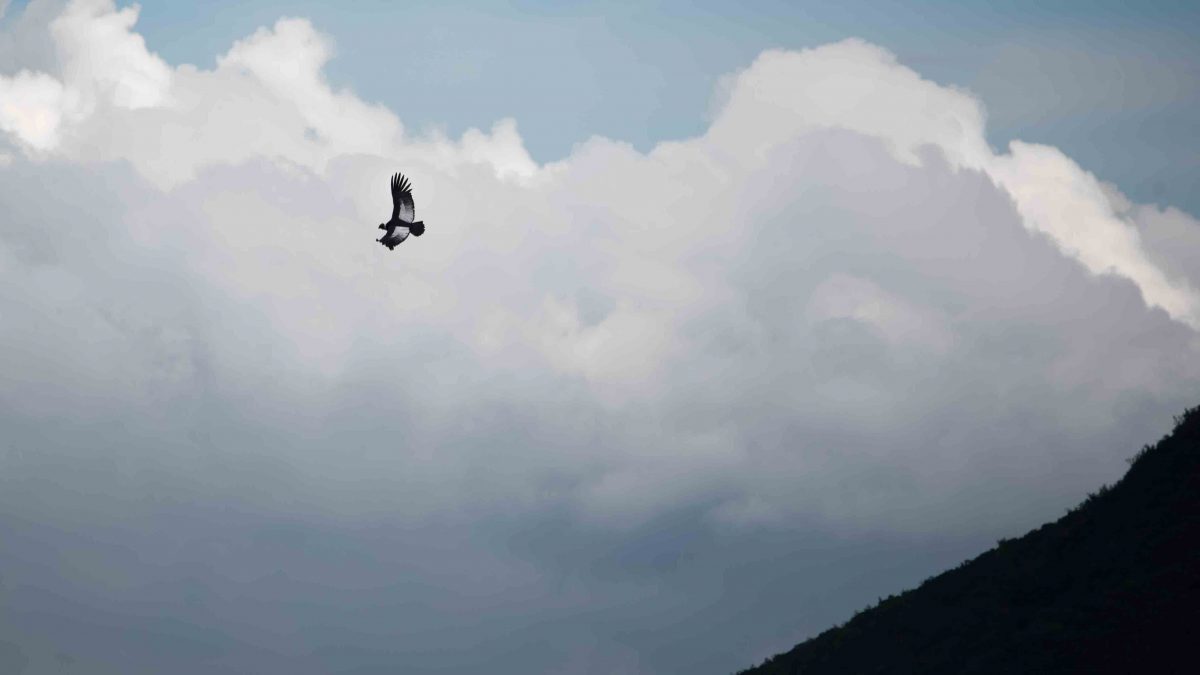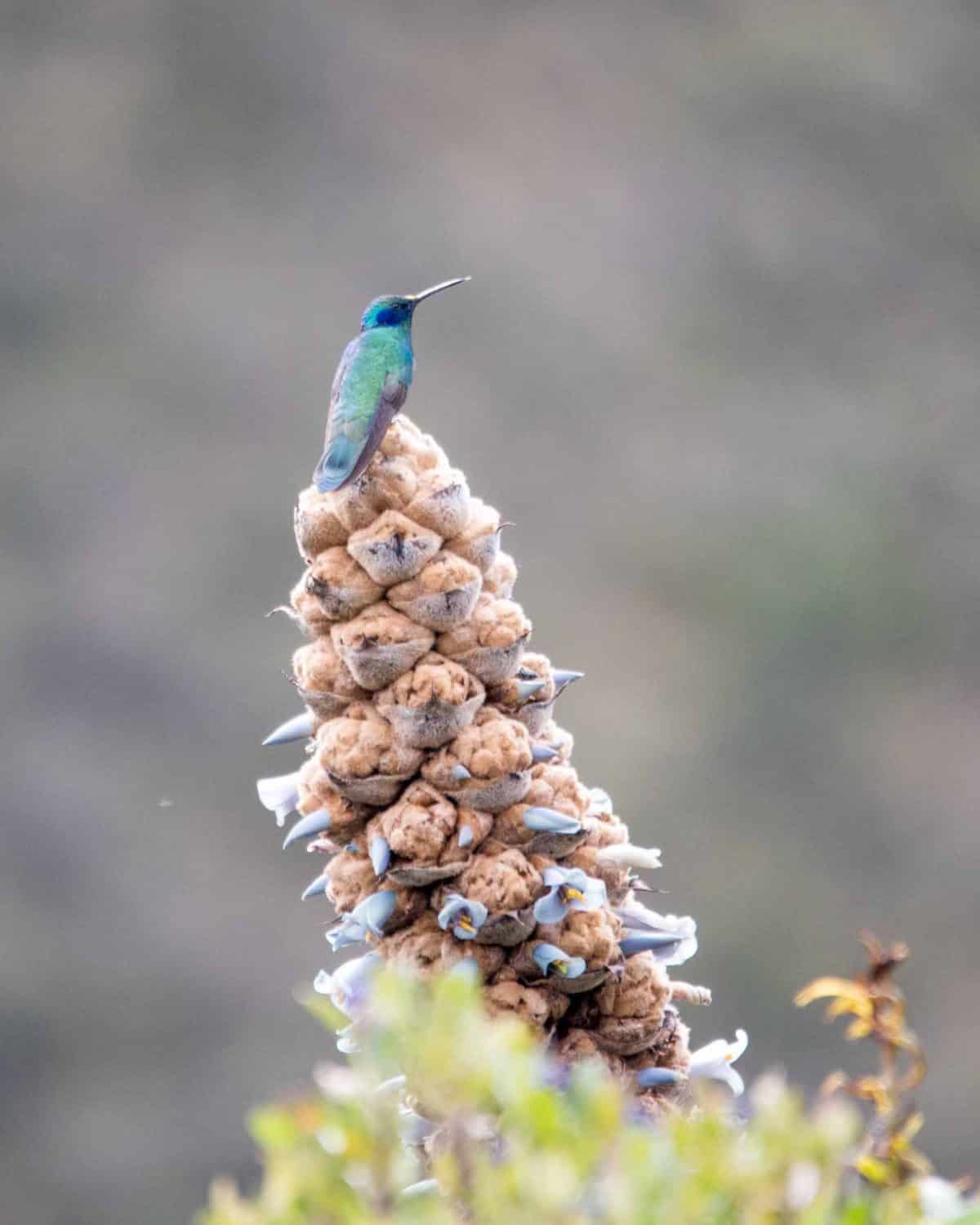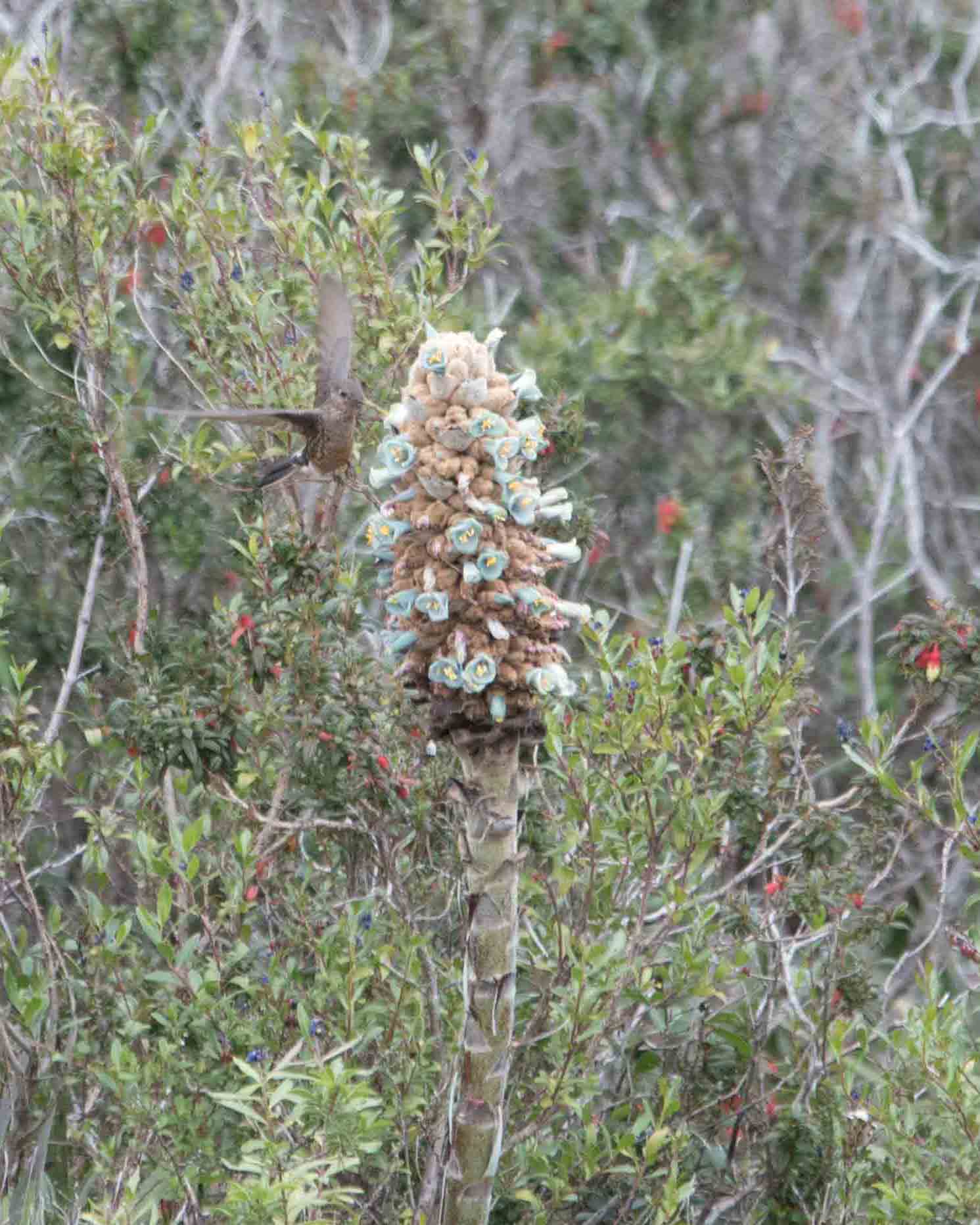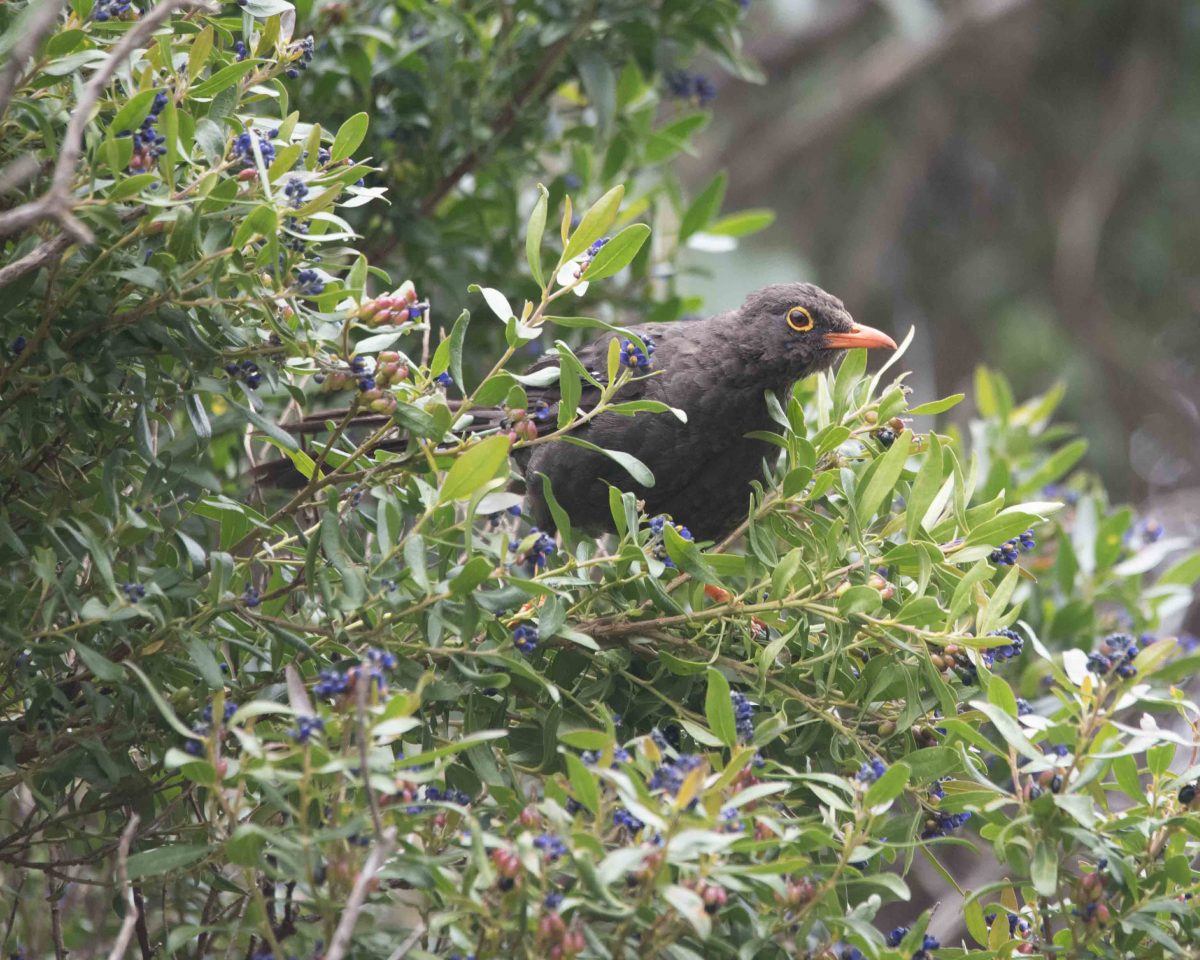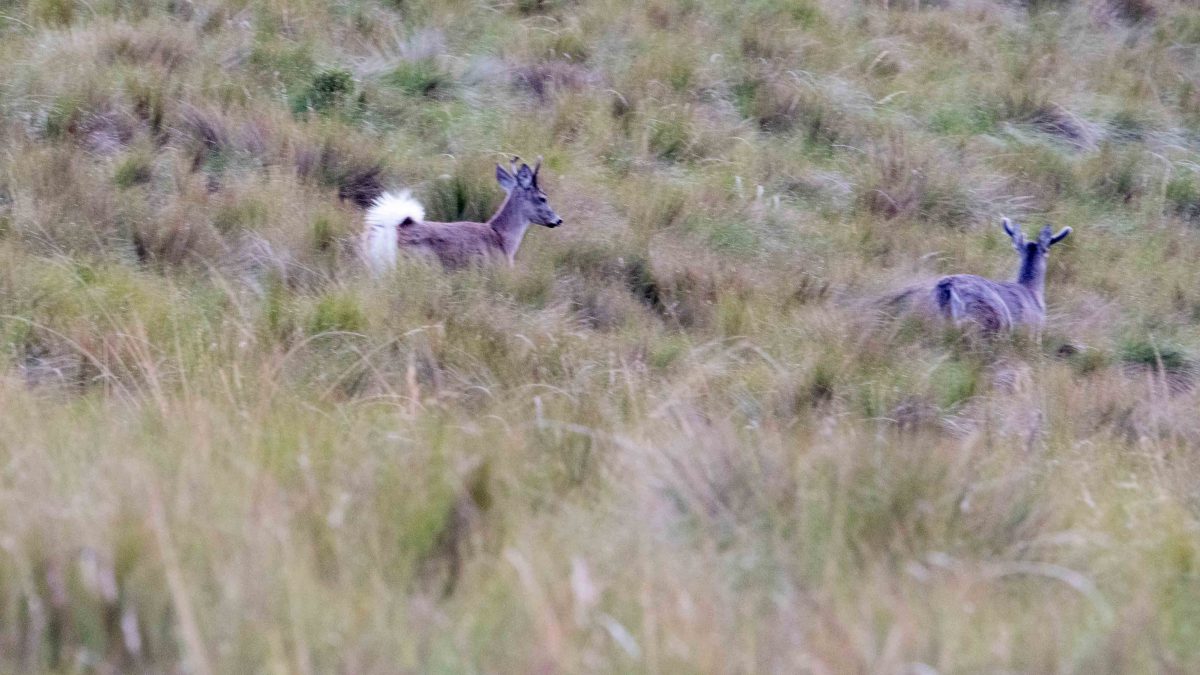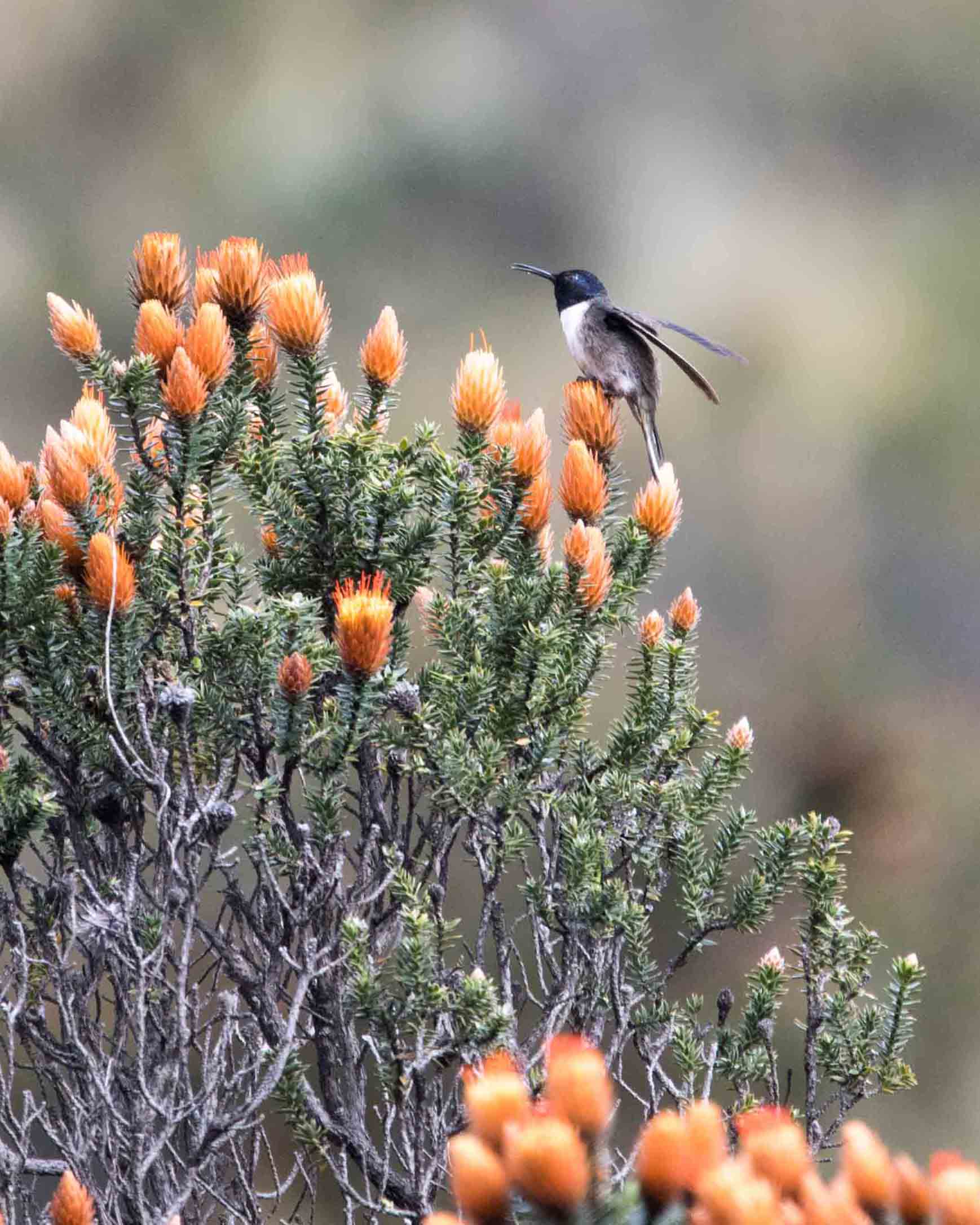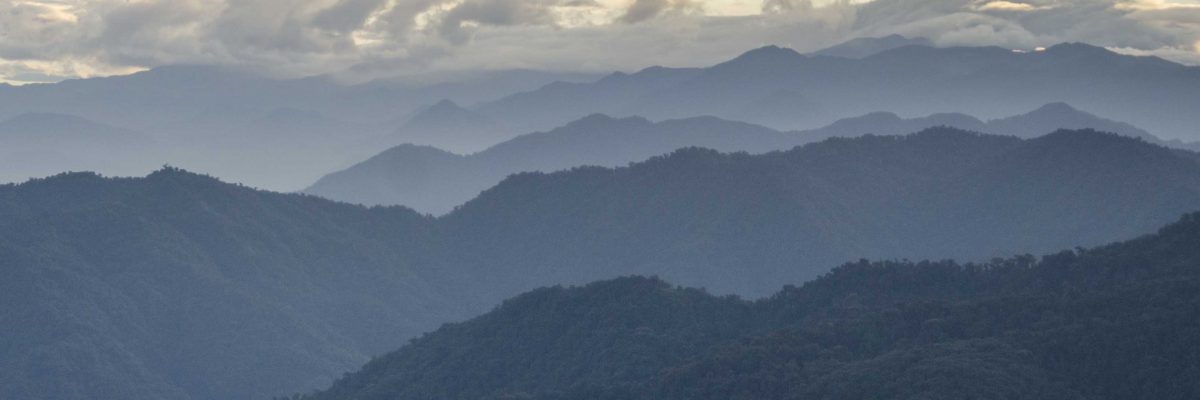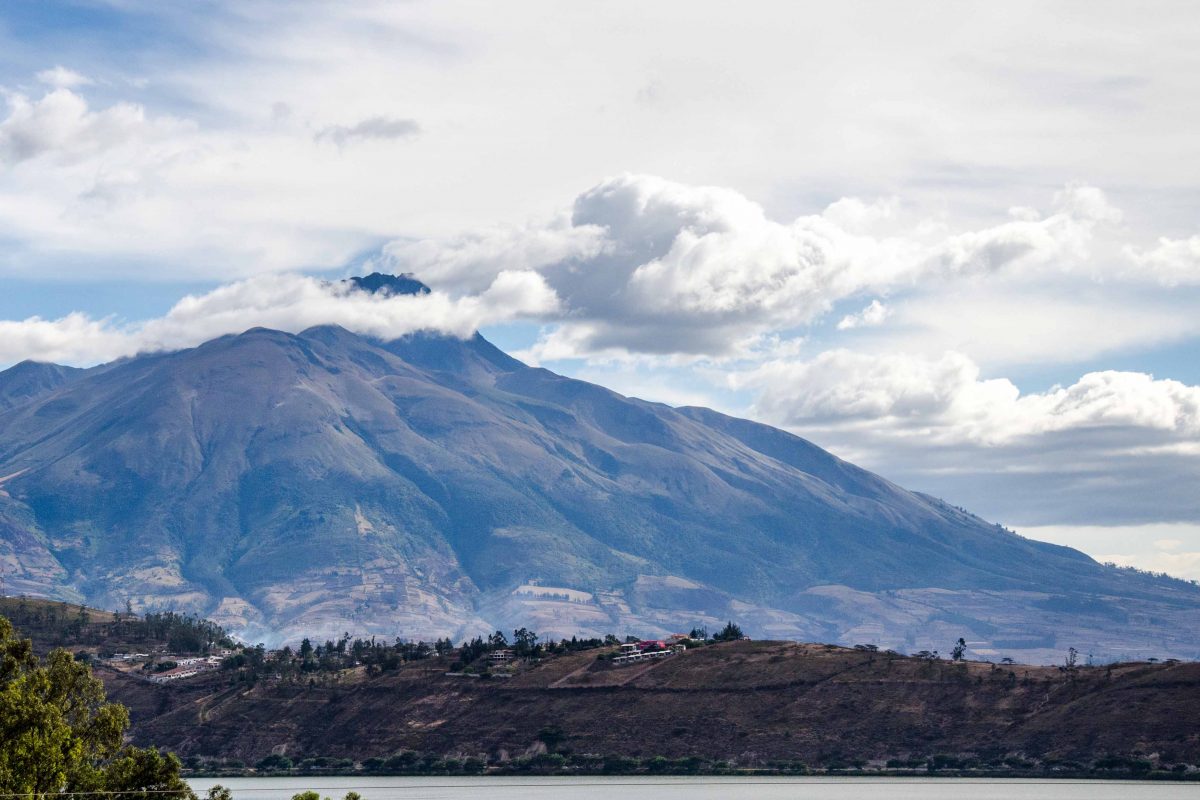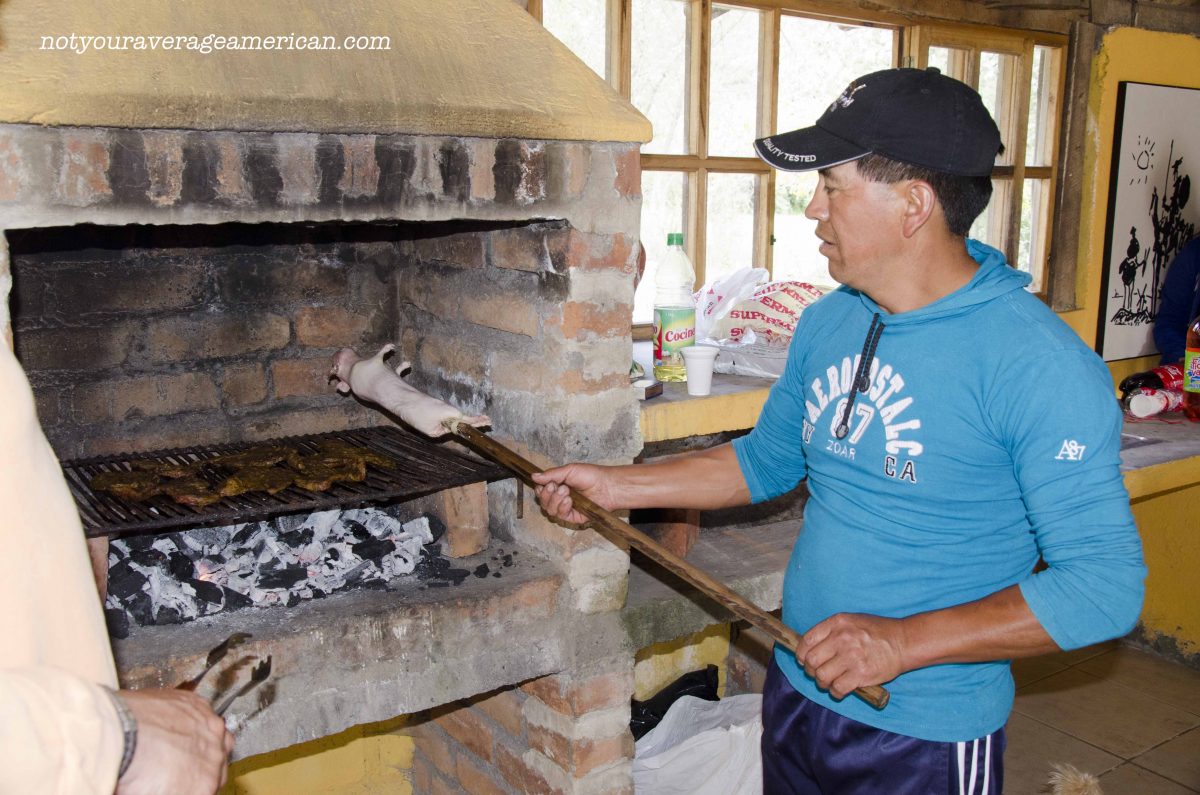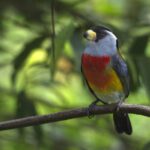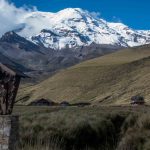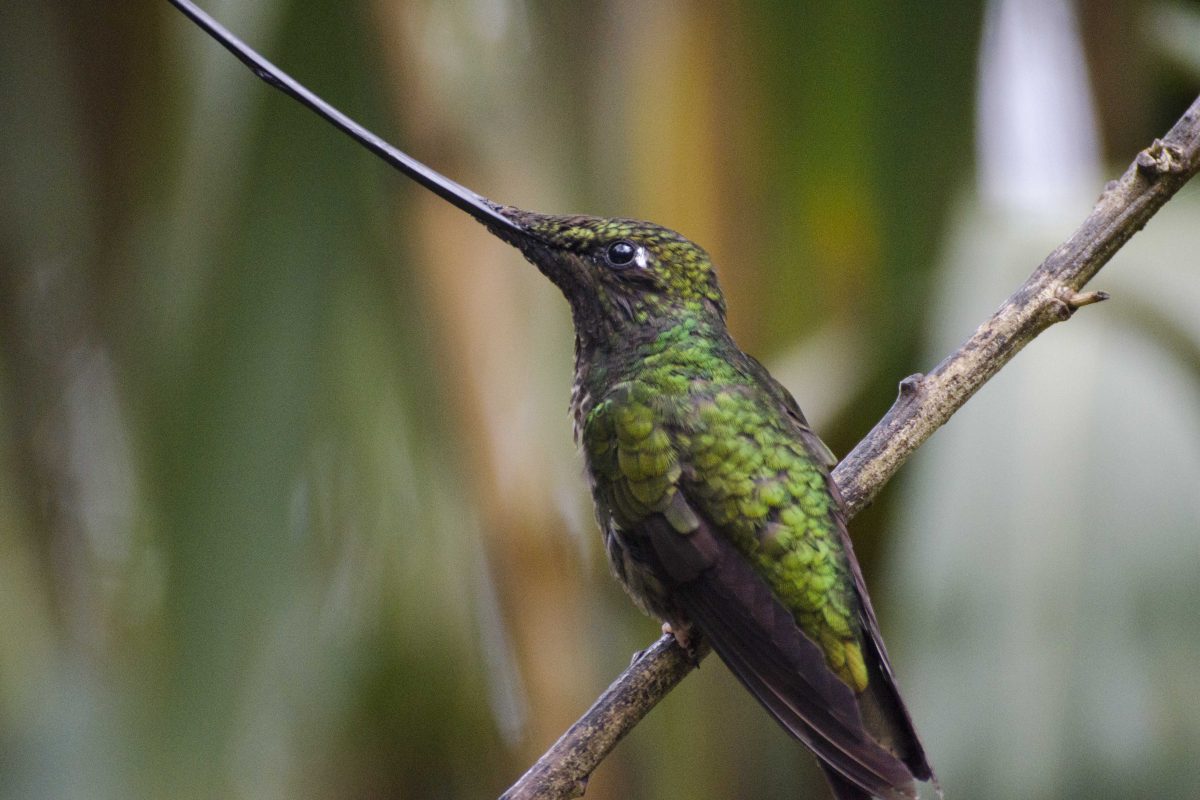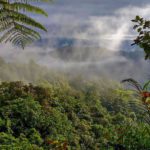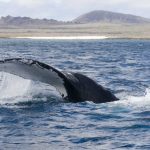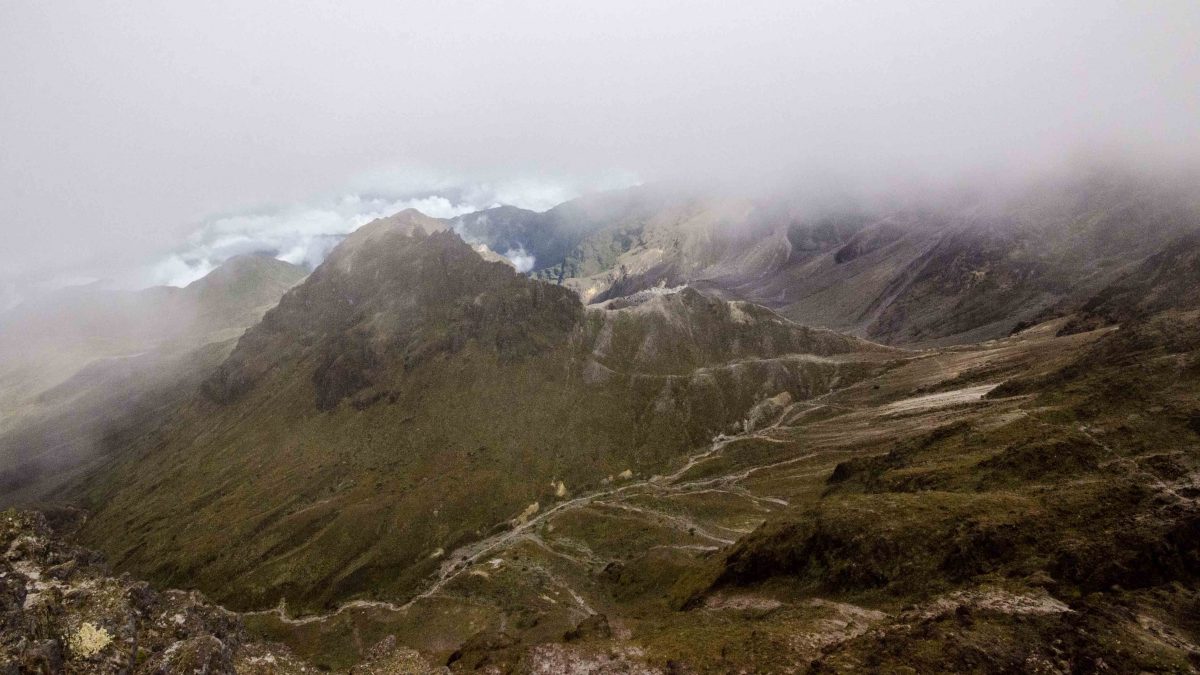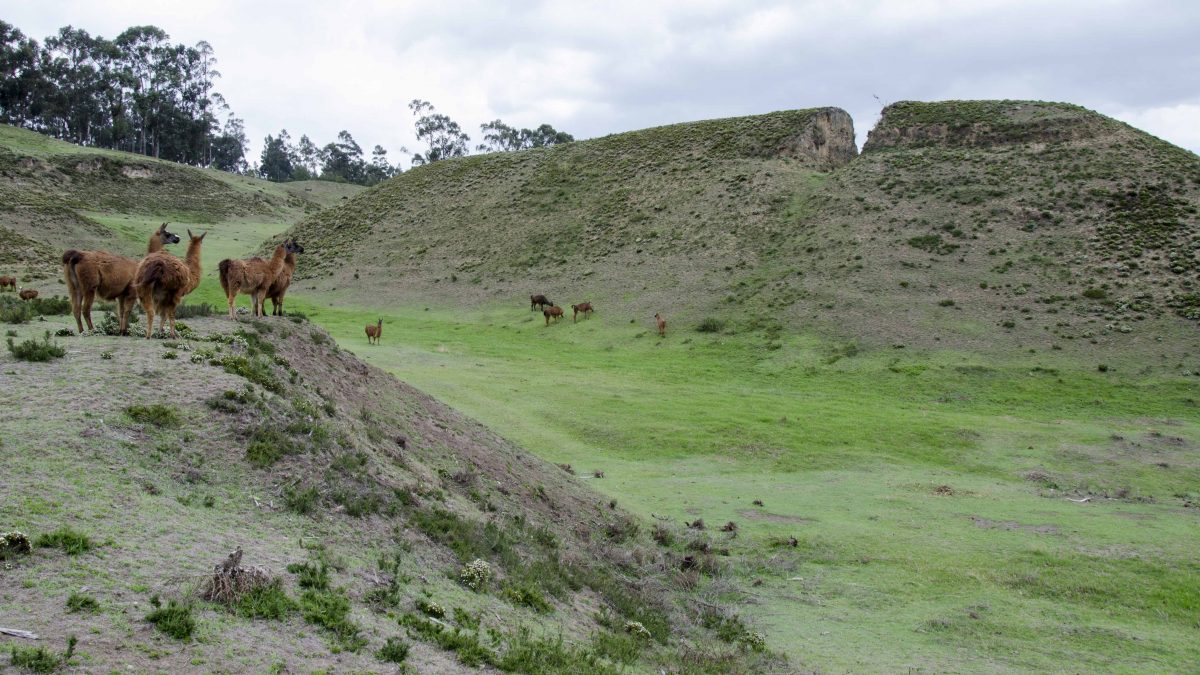The Chakana Reserve (formerly known as the Antisanilla Reserve), was born in 2014, when the Jocotoco Foundation purchased land to protect essential high altitude habitat bridging Cayambe-Coca National Park and the Antisana Conservation Area. Access to the 7,000 acre Chakana Reserve is through the small town of Pintag which lies about an hour outside of Quito. The reserves is home to the Andean Spectacled Bear, the Andean Condor, white-tailed deer, fox, wildcats, and several species of hummingbirds.
Mirador Chakana
Many people unexpectedly run into the Reserva Chakana when they take a trip out to see Laguna Mica. Along the road to this high mountain lake at the foot of the Antisana Volcano, is a sign advertising the reserve and a fairly new viewing platform. From the overlook, it is possible to see condors riding thermals high overhead. If you don’t spot them at first, use a set of binoculars and train them on the bright white spots on the far side of the ravine. Occasionally, you might be lucky enough to catch sight of a condor perched just the bird excrement, or guano. The condors can be hard to see if they are flying directly in front of the cliff. They are suprisingly well camoflauged. But if they to the sky to ride the thermals, it will be easier to spot them high overhead, sometimes a mere dot in the sky, others a pitch black bird with finger-like wingtips, white markings on its upper wings, a white collared ruff, and deep red face.
The mirador is worth a visit to see other birds as well. Directly beneath the wooden platform are tons of native bushes and trees, many of them flowering plants that attract hummingbirds and others with fruit that attract seedeaters.
The Chakana Reserve
I used to think that the lookout was the only access point to the the Chakana Reserve. I couldn’t have been more mistaken. A little further down the road, take a left turn onto the property of the Hacienda Guaytara, a local farm operating a hotel, hostel, and restaurant. At the Y in the road is a very small parking lot and a locked gate protecting access to the higher elevations of the Chakana Reserve.
It is possible to enter with a guide hired via the Jocotoco Foundation. This is a great way to see many species that are hard to see, like the Great Horned Owl and the Rufous Banded Owl, which perch next to their nests on rocky cliffs. Raptors like the Black-chested Buzzard Eagle and Variable Hawk also live in this region. On the day I visited, we hiked out to see condors nesting. While this is not a great opportunity for photographing the birds or their nests, it is an excellent way to see where the majority of Andean Condors nest north of Peru and Bolivia.
This high paramo is covered in tall grasses and purple lupin, perfect habitat for white tailed deer native to the highlands of Ecuador.
However, the highlight of my trip to this part of the Chakana Reserve was not the Andean Condor nor the White-tailed Deer. It was a tiny creature, a small hummingbird with a bright white chest and a brilliant purple head called the Ecuadorian Hillstar. This beauty of a bird lives on the highest slopes of Ecuadorian mountains, at the same level that the Chiquiragua blooms. The males can be hard to see, despite their brilliant coloring. And there is one hillside on the reserve where we watched a few of these stunning little birds flit from flower to flower.
Reserva Antisanilla
Reserva Antisanilla - the platform viewing spot next to Tambo Condor.
Hosteria Guaytara
Hosteria Guaytara
Area de Conservación Antisana
The Antisana Conservation Area (also called the Antisanilla Wildlife Reserve)
Laguna de Mica, Ecuador
Laguna Mica
Tambo Condor
We recommend eating either breakfast or lunch at Tambo Condor. This is a great place to see hummingbirds. They also have a spotting scope to make it easier to see nesting Andean Condors.
Information For Your Trip
While this is a possible day trip, we do not recommend driving this road in the dark. Sunrise and sunset are approximately at 6:15 am and pm year round. Since you are likely to lose coverage on these roads, consider downloading an app like Map.Me to keep you on the right track.
- Direction by Car, use WAZE and look for Reserva Antisanilla, Quito, Pichincha, Ecuador.
- Direction by Public Transportation It is possible to arrive by bus to Pintag but past that point, you would need to hire a driver. Please consider contacting the Jocotoco Foundation to arrange for an affordable guided tour instead.

